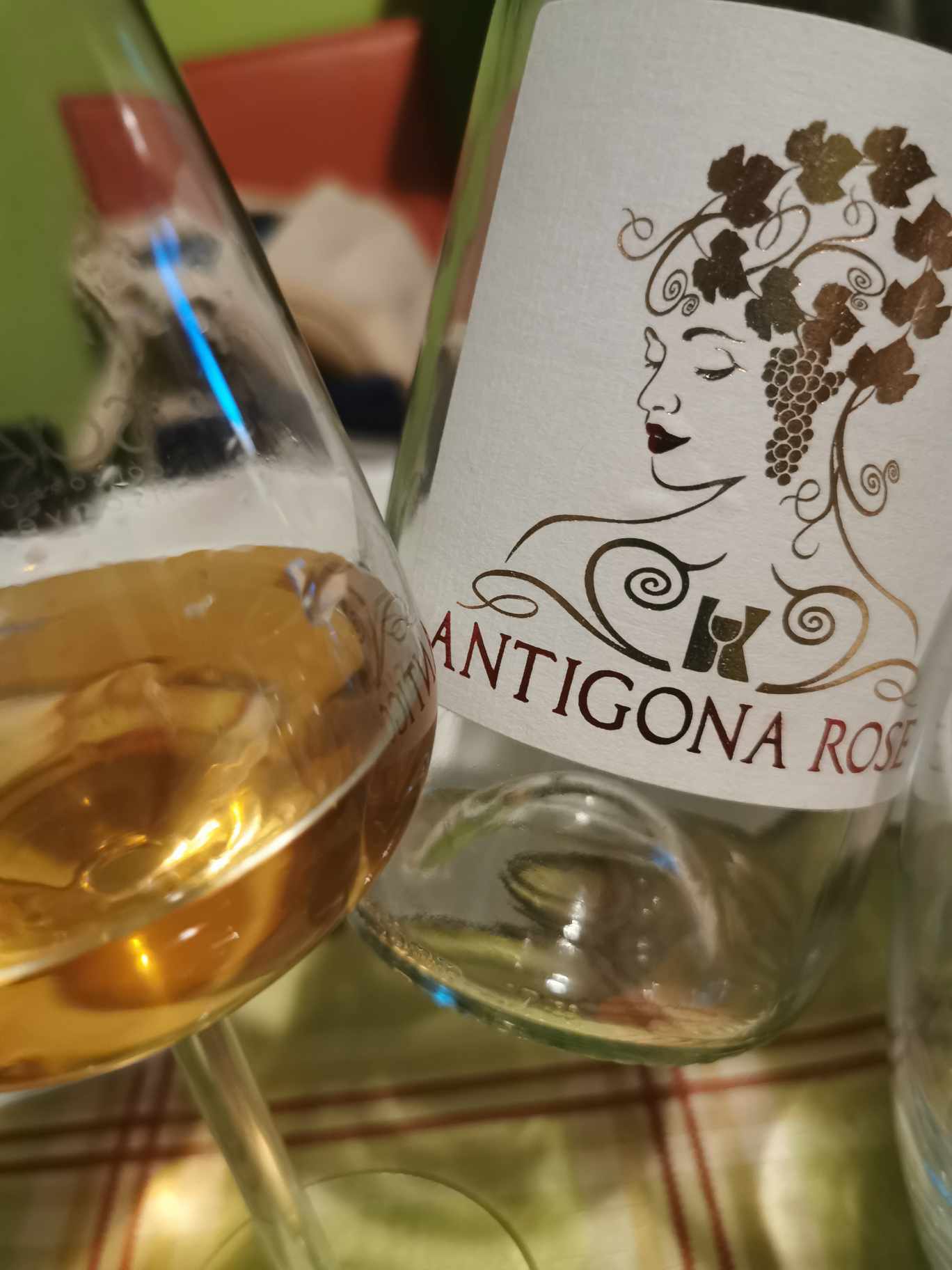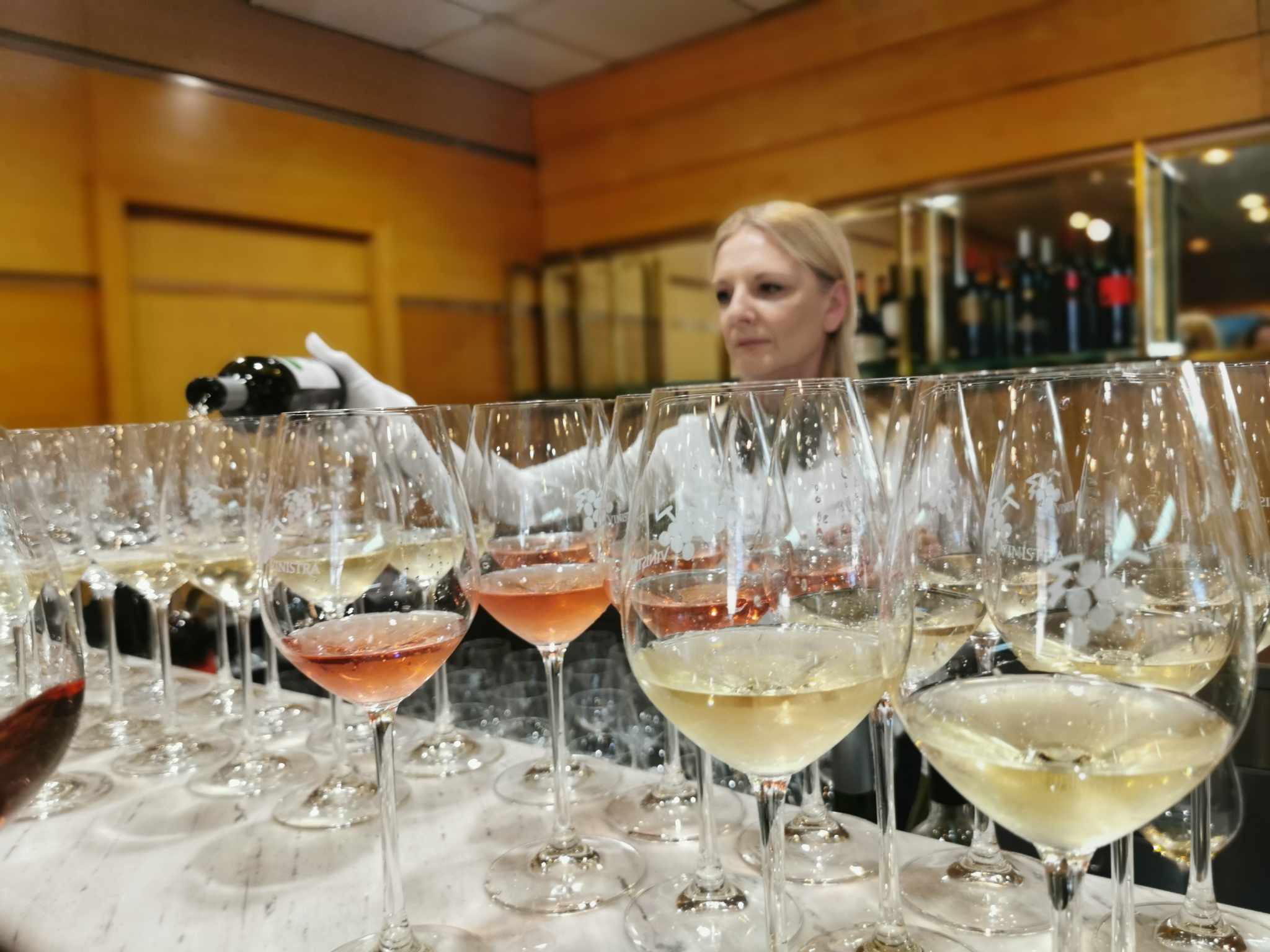
An article about modern Serbian wine scene has been published in October edition of the most important Hungarian wine magazine VINCE,which presented to Hungarian readers wines from Masterclass Workshop "Serbia Today - A Selection of The Best Wines from Local and International Varieties", held at Vince Balaton 2012 wine festival. The author of this article is Tomislav Ivanović.
The article gives a short overview of present and future of Serbian wine-making, and the following wines are presented:
- Smederevka 2010, Podrum Janko
- Tamjanika 2009, Vinarija Budimir
- Triada Bela 2009, Vinarija Budimir
- Trijumf 2009, Podrum Aleksandrović
- Triada Crvena 2007, Vinarija Budimir
- Trijumf Noir 2008, Podrum Aleksandrović
- Cabernet Sauvignon Reserve 2009, Podrum Radovanović
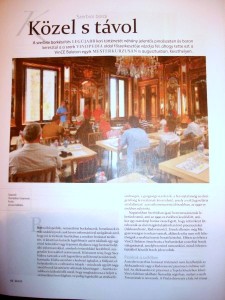
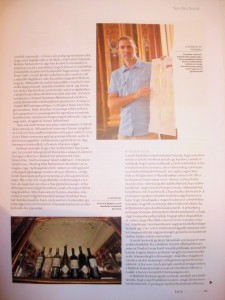
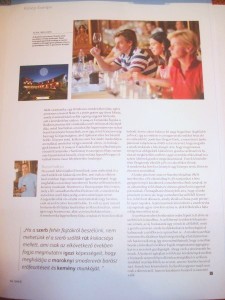
Below you will find an original text of the article:
NEAR, YET FAR AWAY
Wine encyclopedias, world wine guides, wine atlases and other specialized books on wine prevailingly contain little information about what’s happening on the modern wine scene of Serbia. The persistant amongst you will, in most cases, come across a brief paragraph or a section dealing with rather general and usually insufficiently precise information originating decades ago or from the period of former-Yugoslavia. It’s a common fact that Serbia accounted for more than 1/3 of entire wine production in former Yugoslavia. Despite favourable climate, geographic position and soil diversity, which have potential for creating great wines, Serbia still fails to position itself on the global wine scene, largely as a consequence of ethnic tensions, economic sanctions, periods of instability and isolation which hit the region of former Yugoslavia in 1990s, in the post-Communist era.
Nowadays, Serbia undergoes a sort of wine culture renaissance, which was initiated in 1990s, when a few wine-makers joined their efforts into a pioneer venture of establishing the first private wine cellars (Aleksandrović, Radovanović). Still, even in Hungary, Serbia’s northern neighbour, one doesn’t often get an opportunity to meet and taste wines from the Serbian terroir. This year’s VinCE Balaton festival brought closer to wine lovers a selection of Serbian wines made from both local and international grape varieties.
Every story of modern Serbian wine-making cannot begin without Aleksandrović and Radovanović cellars. Aleksandrović Cellar is located in the village of Vinča near Topola, in a region called Šumadija (also known as “Serbian Tuscany”). The name Vinča is derived from ancient Roman name of the village – Vincea, which clearly denotes the predominant occupation of inhabitants throughout its history. Božidar Aleksandrović started production and bottling of wine in 1991 with an intention to restore century-old tradition of wine-making in his family. When the famous cellar keeper of the Serbian Royal family, Živan Tadić, who had emigrated to Canada after the Second World War, discovered that Aleksandrović family restores wine-making tradition of Topola, he sent them a gift – the manuscript compiled during years of service in the Royal Winery owned by the Serbian Royal Family Karađorđević. Pages of this manuscript also contained the blend composition for Trijumf, wine which brought fame to Aleksandrović Cellar.
Trijumf 2009 contains 85% Sauvignon Blanc and 15% Pinot Blanc and Riesling. This wine is characterized by crystalline golden-yellow colour with greenish reflection and an exotic combination of grapefruit, passion fruit aromas aligned with mineral and flowery tones. It is soft and full-bodied, with an exciting long finish.
Not many Serbian wine-makers dare to produce wine from Pinot Noir. Among the daring ones is Aleksandrović Cellar, which created
Trijumf Noir 2008, 100% Pinot Noir. This wine is characterized by opulent aroma of dark cherry with soft notes of white pepper. Distinctly fruity on the palate, with soft, velvety tannins and pleasant long finish.
It is often said that wine takes character from its creator. This is undoubtedly proven by
Cabernet Sauvignon Reserve 2009 from Radovanović Cellar (Krnjevo, Central Serbia). Miodrag Mija Radovanović, owner of the cellar, made this elegant, soft, dignified wine characterized by rich tones of forest fruit (blackberry, blueberry) and oak which doesn’t subdue fresh fruitiness of Cabernet Sauvignon. Mija’s goal was to avoid jammy notes in this wine, and retain its fresh fruitiness on the palate. The wine aged for 18 months in oak barrels, and for another 12 months in the bottle. In the cellar, Mija Radovanović has barrique barrels made from French, American, Slavonian and Serbian oak. Following his creed that wine-making is actually an eternal quest, he continuously seeks the ideal match in which wine and oak will create the perfect unity.
Serbian epic poetry teems with scenes where Serbian nobility and heros drink red wine from a cup before they venture into a battle against the Turkish conquerors. According to historic records, this wine could have been made from Serbian red grape Prokupac, which was once common throughout Serbia, as well as in Bulgaria and Macedonia. Today, Prokupac (synonims: Rskavac, Kameničarka, Skopsko Crno, Niševka) is a common sight in vineyards of Župa (region in central Serbia in the vicinity of Aleksandrovac), hence is also known as “the King of Župa”. Prokupac is often planted on sandy or pebbly soil in order to subdue its high yield and high vigour, and since it’s a late-ripening variety, the best results are obtained if planted on sun-drenched southern slopes. In a glass, Prokupac is easily recognized owing to its distinct vibrant tannins, and wineries from Župa region have skilfully grasped how to avoid bitter and astringent tannic impression. Thus, tannin structure of Prokupac wine allows for excellent aging potential, so this wine will show all its splendour, fruity character and aromas of plum, blackberry, dark cherry accompanied with softened tannins after 5-6 years of ageing.
Wine-makers in Serbia often blend Prokupac with some international varieties. Take
Triada Crvena 2007 wine from Budimir Winery (Aleksandrovac) as an example, where one can see how Prokupac, blended with Merlot, may retain its tannin structure, buoyancy and freshness, while absorbing from Merlot its full-bodied, distinctly fruity character. The name of this wine (in Greek, Triada stands for Trinity) manifests the philosophy of Budimir Winery owners – a trinity of Family, Wine and Soil. Budimir Winery is one of those wineries which strive to create modern, yet authentic wines made from local varieties of Serbia. Beside Prokupac, vineyards of Budimir Winery are home to Tamjanika, an autochtonous white Muscat variety, a local clone of Muscat Blanc a Petits Grains to be more precise, which was brought to Serbia by commercial routes from Greek islands centuries ago. The wine
Tamjanika Župska 2009 from Budimir Winery is a true representative of “Serbian” style of Tamjanika, because it is used in Serbia traditionally to make dry wines, unlike South France and Greece (where Muscats are typically used to produce sweet wines). This medium-bodied wine with pleasant acids simply effuses mild Muscat aroma accompanied with floral aromas and notes of citrus and elderberry.
Triada Bela 2009, another wine born in the cellar of Budimir Winery, is a blend of Tamjanika, Chardonnay and Sauvignon Blanc, where the best features of each variety are merged together to create an unforgettable impression.
Speaking of white Serbian varieties, we can’t skip “the ugly duckling” of Serbian vineyards, which will only in the years to come reveal its full potential and show its best, to the greatest extent owing to efforts and hard work of a few wine-makers from Smederevo, the city on the Danube bank which used to be the Serbian capital in 15th century. An autochtonous Serbian grape variety Smederevka was named after this city. Since the period of former-Yugoslavia, this variety has been badly reputed as a cheap spritzer wine. This variety was the first choice for large industrial wineries of Serbia and Macedonia because of its high yield reaching up to 25 t/ha. Smederevka is sensitive to frost, prefers dry and sandy soil and collects little sugar in its large berries (up to 20%), therefore the very mentioning of Smederevka wine used to bring to mind impression of wines with high acidity level. In 2006, Dragan Vasić, the owner of Janko Cellar from Smederevo, revealed his intention – to give Smederevka an opportunity to show its best by careful and different approach both in the vineyard and the cellar, for example by controlled reduction of yield or by choosing the right harvesting time. Thus, Dragan managed to reach 22% sugar level. Smederevka is a fresh wine, light to medium-bodied, with herbal and citric aromas.
The wine
Smederevka 2010 from Janko Cellar (82% Smederevka, 15% Italian Riesling, 3% Tamjanika) combines refreshing herbal character and vibrant acids of Smederevka with fruity notes of green apple and citrus from Italian Riesling. Quite enough to convince us that Janko Cellar is on the right path to create from Smederevka grapes an unpretentious, refreshing wine, ideal for scorching summer days along the Danube. Janko Cellar takes credit for steadily growing number of Smederevka admirers who rediscover the new face of this variety.
Serbian modern wine-making has made a giant leap forward over the last two decades. Areas covered by vineyards have been increasing steadily, new wineries are popping up like mushrooms after rain, modern techniques and technology are used both in vineyards and cellars… Generally, a common feature of modern Serbian wine-making are still young vineyards, so we can expect that wines from Serbia will show all the richness of its terroir and splendour in the coming years, as these vineyards reach their maturity. Together with favourable climatic and geographic conditions, passionate dedication and efforts made by Serbian wine-makers already give exceptional indication of direction where Serbia is heading on in terms of wine. As a result, Serbia will no longer be famous only for its Slivovitz (plum brandy) but also for wines with distinct character.
(article published in Hungarian in the magazine VinCE, October 2012)
BACK TO CATEGORY
 An article about modern Serbian wine scene has been published in October edition of the most important Hungarian wine magazine VINCE,which presented to Hungarian readers wines from Masterclass Workshop "Serbia Today - A Selection of The Best Wines from Local and International Varieties", held at Vince Balaton 2012 wine festival. The author of this article is Tomislav Ivanović.
An article about modern Serbian wine scene has been published in October edition of the most important Hungarian wine magazine VINCE,which presented to Hungarian readers wines from Masterclass Workshop "Serbia Today - A Selection of The Best Wines from Local and International Varieties", held at Vince Balaton 2012 wine festival. The author of this article is Tomislav Ivanović.










